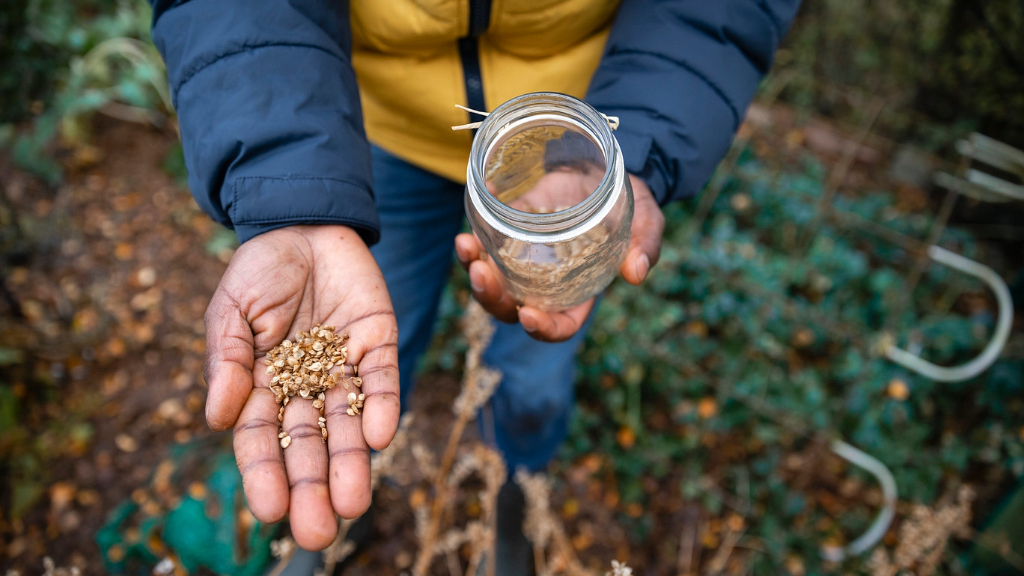Seed Harvesting Tips: Mistakes To Avoid When Saving Seeds From Plants


For most of my amateur gardening career, I have relied on plants from my local nursery. It's easier after all. I have tried saving seeds, which sounds simple but comes with some potential pitfalls. Before you start harvesting seeds from your garden, learn from the seed saving mistakes I've made.
Seed Harvesting Tips
- Don't expect to eat the herbs and veggies you grow for seeds. If you want to save seeds from plants like herbs or certain vegetables, you'll need one or two plants solely for that purpose. Once an herb like basil or a leafy vegetable like lettuce produces flowers, it's no good to eat. Include a plant that you'll allow to bolt and let it develop flowers and then seed heads.
- Don't save seeds from hybrids. If you are growing a hybrid plant, the resulting seeds will not give the same result. A hybrid is a combination of two varieties that produces a third with unique traits. The seeds from that hybrid contain random genetics that will not likely match the parent plant. Try it for fun and see what you get, but it won't be the original.
- Don't make it harder than it needs to be. One of the easiest ways to benefit from the seeds already in the garden is simply to let plants reseed themselves. Harvesting seeds from your garden can be tricky with some plants, so when it makes sense to rely on reseeding, let nature take its course. Some flowers reseed readily and allow you to get new plants year after year with minimal effort. Just stop deadheading in late summer to allow seed heads to develop.
- Don't start with difficult seeds. Flower seeds are pretty easy to collect and save. Simply let the seed head develop and dry, shake the seeds loose and store. With vegetables, it can get a little more challenging. Carrot seeds, for instance, are tiny and hard to find. Then there are plants that cross-pollinate, which means that as with hybrids, you won't get a true plant from the seeds. The easiest veggies to start with have bigger seeds and self-pollinate: tomatoes, cucumbers, beans, melons, and peppers.
- Don't forget to dry the seeds. Before you store seeds, they need to be dry. For flowers, simply leave them on the plant until dry. Beans are easy too. Leave the pods on the plant until dry and then pull out the seeds. For wet seeds, like cucumbers and tomatoes, you need an extra step. Put the seeds in water for a few days to ferment. This helps remove the pulpy material. The good seeds will sink to the bottom. Collect these, rinse them, and let them dry before storing.
- Don't harvest seeds too early. Seeds must be fully ripe to be ready to plant next season, so don't jump the gun. Flowers and any seed in a pod should stay on the plant until fully ripe and dry. For plants like tomatoes, melons, and cucumbers, allow the fruit to overripen before harvesting.
Gardening tips, videos, info and more delivered right to your inbox!
Sign up for the Gardening Know How newsletter today and receive a free copy of our e-book "How to Grow Delicious Tomatoes".

Mary Ellen Ellis has been gardening for over 20 years. With degrees in Chemistry and Biology, Mary Ellen's specialties are flowers, native plants, and herbs.
-
 Looking For Plants To Give You The Soft And Fuzzies? Try These 5 Fuzzy Leaf Plant Options
Looking For Plants To Give You The Soft And Fuzzies? Try These 5 Fuzzy Leaf Plant OptionsLovers of texture, drama, silver foliage and tactile plants will adore these special sensory garden additions. These fuzzy leaf plant options will leave you all aglow
By Susan Albert
-
 Get Ready For A Summer Of Hummers! Grow These Full Sun Hummingbird Plants and Flowers
Get Ready For A Summer Of Hummers! Grow These Full Sun Hummingbird Plants and FlowersIf you’re lucky enough to enjoy a sunny backyard, make sure you are maxing out on your pollinator opportunities and grow these full sun hummingbird plants and flowers
By Tonya Barnett